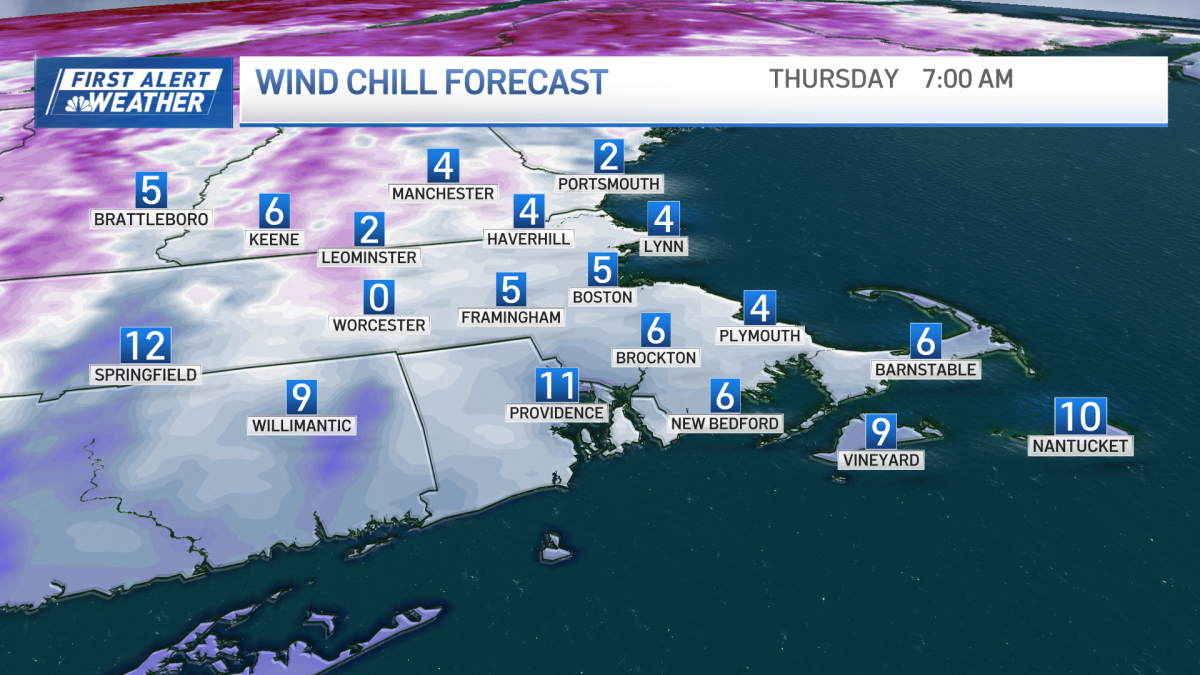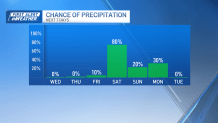Boston, MA
Celtics expect Kristaps Porzingis to be cleared for start of training camp

BOSTON — It turns out that Kristaps Porzingis will indeed miss the FIBA Basketball World Cup with a foot injury. While the new Boston big man won’t be playing for Latvia in August, the Celtics don’t sound concerned that it will keep him from playing come October.
Porzingis revealed Tuesday that he is dealing with plantar fasciitis. After several weeks of recovery and MRIs on his foot, a joint decision was made between himself, the Latvian national team, and the Celtics for the big man to sit out the upcoming tournament.
Given Porzingis and the injury history he’s carried throughout his eight-year career in the NBA, any injury is a bit worrisome. Considering the Celtics are relying on Porzingis to be the third wheel behind Jayson Tatum and Jaylen Brown, there is a lot riding on his health in the 2023-24 season.
For now, though, the Celtics are downplaying any concern that the ailment will keep Porzingis out of the Boston lineup when the regular season arrive.
“Though the 7-foot-3 sharpshooter indicated he’s not fully ready for competition at this point and determined it was necessary to continue the recovery process, a Celtics source reached later Tuesday downplayed any concern over the issue,” The Athletic’s Jay King reported Wednesday. “The source was granted anonymity because they were not authorized to speak publicly.”
The team released an official statement on Porzingis’ injury Wednesday morning, and said he “will engage in a four-to-six-week rehab program, and is expected to be cleared for the start of training camp.”
The Celtics acquired Porzingis from the Wizards in a three-team trade that sent Marcus Smart to the Grizzlies, so it cost them a key piece of their core to add the big man this offseason. Boston also gave him a two-year extension worth $60 million, so Porzingis is a key part for the C’s over the next three years.
He was relatively healthy for Washington last season, with his 65 games played the most action Porzingis has seen since the 2016-17 season — his second year in the league. Porzingis averaged a career-best 23.2 points per game off 50 percent shooting overall and 39 percent from 3-point range last season, to go along with 8.4 rebounds per contest.
Rest is the best course of action for Porzingis and his plantar fasciitis, and now he’ll have at least a few weeks off before the Celtics tip off training camp sometime in late September.
Thanks for reading CBS NEWS.
Create your free account or log in
for more features.

Boston, MA
Constantine Manos, photographer for landmark ‘Where’s Boston?’ exhibit, dies at 90 – The Boston Globe

Among Mr. Manos’s books were “A Greek Portfolio” (1972; updated 1999), “Bostonians” (1975), “American Color” 1995) and ”American Color 2″ (2010). Mr. Manos’s work with color was notably expressive and influential.
“Color was a four-letter word in art photography,” the photographer Lou Jones, who worked with Mr. Manos on “Where’s Boston?,” said in a telephone interview. “But he was making wonderful, complex photographs with color, and that meant so much.”
Yet for all his formal skill, Mr. Manos always emphasized the human element in his work. “I am a people photographer and have always been interested in people,” he once said.
That interest extended beyond the photographs he took. He was a celebrated teacher. Among the students he taught in his photo workshops was Stella Johnson.
“He’d go through a hundred of my photographs,” she said in a telephone interview, “and maybe he’d like two. ‘No, no, no, no, yes, no.’ Costa really taught me how to see. I remember him looking at one picture and saying, “You were standing in the wrong spot.’ Something like that was invaluable to me as a young photographer.
“He was a very, very kind man, very generous. But he was very strict. ‘How could you do that?’ He was adored by his students and by his friends, absolutely. We were all lucky to have been in his orbit.”

Mr. Manos, who moved to Provincetown in 2008, lived in the South End for four decades. The South Carolina native’s association with the Boston area began when the Boston Symphony Orchestra hired him as a photographer at Tanglewood. He was 19. This led to Mr. Manos’s first book, “Portrait of a Symphony” (1961; updated 2000).
Constantine Manos was born in Columbia, S.C., on Oct. 12, 1934. His parents, Dimitri and Aphrodite (Vaporiotou) Manos, were Greek immigrants. They ran a café in the city’s Black section. That experience gave Mr. Manos a sympathy for marginalized people that would stay with him throughout his life. As a student at the University of South Carolina, he wrote editorials in the school paper opposing segregation. Later, he would do extensive work chronicling the LGBTQ+ community with his camera.
Mr. Manos became interested in photography at 13, joining the school camera club and building a darkroom in his parents’ basement. After graduating from college, Mr. Manos did two years of Army service in Germany, working as a photographer for Stars and Stripes. He joined Magnum in 1963. This had special meaning for him. Mr. Manos’s chief inspiration as a young photographer had been Henri Cartier-Bresson, one of Magnum’s founders. He was such an admirer he made a point of using the same equipment that Cartier-Bresson did.
That same year, Mr. Manos entered a seafood restaurant in Rome that was around the corner from the Pantheon. Prodanou, his future husband, was dining with friends. Noticing Mr. Manos, he gestured to him. “Would you join us for coffee?” The couple spent the next 61 years together, marrying in 2011.

Mr. Manos lived in Greece for three years, which led to “A Greek Portfolio.” He undertook a very different project in the Athens of America. Part of the city’s Bicentennial tribute, “Where’s Boston?” was a slice-of-many-lives view of contemporary Boston.
Located in a red-white-and-blue striped pavilion at the Prudential Center, it became a local sensation. The installation involved 42 computerized projectors and 3,097 color slides (most of them taken by Mr. Manos), shown on eight 10 feet by 10 feet screens. Outside the pavilion was a set of murals, consisting of 152 black-and-white photographs of Boston scenes, all shot by Mr. Manos.
“The most important thing I had to do was to keep my picture ideas simple,” he said in a 1975 Globe interview. “Viewers are treated to a veritable avalanche of color slides in exactly one hour’s time.”
In that same interview, he made an observation about his work generally. “I prefer to stay in close to my subjects. I let them see me and my camera and when they become bored they forget about me and then I get my best pictures.”
Among institutions that own Mr. Manos’s photographs are the Museum of Fine Arts; the Museum of Modern Art, New York; the Art Institute of Chicago; the High Museum of Art, Atlanta; the Library of Congress; and the Bibliothèque Nationale, Paris.
In addition to his husband, Mr. Manos leaves a sister, Irene Constantinides, of Atlanta, and a brother, Theofanis Manos, of Greenville, S.C.
A memorial service will be held later this year.
Mark Feeney can be reached at mark.feeney@globe.com.
Boston, MA
Below freezing temperatures again today

The winds are still going Wednesday, but the air temperatures remain at respectable levels. Highs will manage to weasel up to 30 in most spots. It’s too bad we’re not going to feel them at face value. Instead, we’re dressing for temps in the teens all day today.
Thursday and Friday are the picks of the week.
There will be a lot less wind, reasonable winter temperatures in the 30s and a decent amount of sun. We’ll be quiet into the weekend, as our next weather system approaches.
With mild air expected to come north on southerly winds, highs will bounce back to the low and mid-40s both days of the weekend.
Showers will be delayed until late day/evening on Saturday and into the night. There may be a few early on Sunday too, but the focus on that day will be to bring in the cold.
Highs will briefly sneak into the 40s, then fall late day.

We’ll also watch a batch of snow late Sunday night as it moves up the Eastern Seaboard.
Right now, there is a potential for some accumulation as it moves overhead Sunday night and early Monday morning.
It appears to be a weak, speedy system, so we’re not expecting it to pull any punches.

Enjoy the quieter spell of weather!
Boston, MA
Boston City Councilor will introduce

BOSTON – It could cost you more to get a soda soon. The Boston City Council is proposing a tax on sugary drinks, saying the money on unhealthy beverages can be put to good use.
A benefit for public health?
“I’ve heard from a lot of residents in my district who are supportive of a tax on sugary beverages, but they want to make sure that these funds are used for public health,” said City Councilor Sharon Durkan, who is introducing the “Sugar Tax,” modeled on Philadelphia and Seattle. She said it’s a great way to introduce and fund health initiatives and slowly improve public health.
A study from Boston University found that cities that implemented a tax on sugary drinks saw a 33% decrease in sales.
“What it does is it creates an environment where we are discouraging the use of something that we know, over time, causes cancer, causes diet-related diseases, causes obesity and other diet-related illnesses,” she said.
Soda drinkers say no to “Sugar Tax”
Soda drinkers don’t see the benefit.
Delaney Doidge stopped by the store to get a mid-day pick-me-up on Tuesday.
“I wasn’t planning on getting anything, but we needed toilet paper, and I wanted a Diet Coke, so I got a Diet Coke,” she said, adding that a tax on sugary drinks is an overreach, forcing her to ask: What’s next?
“Then we’d have to tax everything else that brings people enjoyment,” Doidge said. “If somebody wants a sweet treat, they deserve it, no tax.”
Store owners said they’re worried about how an additional tax would impact their businesses.
Durkan plans to bring the tax idea before the City Council on Wednesday to start the conversation about what rates would look like.
Massachusetts considered a similar tax in 2017.
-
/cdn.vox-cdn.com/uploads/chorus_asset/file/25822586/STK169_ZUCKERBERG_MAGA_STKS491_CVIRGINIA_A.jpg)
/cdn.vox-cdn.com/uploads/chorus_asset/file/25822586/STK169_ZUCKERBERG_MAGA_STKS491_CVIRGINIA_A.jpg) Technology6 days ago
Technology6 days agoMeta is highlighting a splintering global approach to online speech
-

 Science4 days ago
Science4 days agoMetro will offer free rides in L.A. through Sunday due to fires
-
/cdn.vox-cdn.com/uploads/chorus_asset/file/25821992/videoframe_720397.png)
/cdn.vox-cdn.com/uploads/chorus_asset/file/25821992/videoframe_720397.png) Technology1 week ago
Technology1 week agoLas Vegas police release ChatGPT logs from the suspect in the Cybertruck explosion
-

 Movie Reviews1 week ago
Movie Reviews1 week ago‘How to Make Millions Before Grandma Dies’ Review: Thai Oscar Entry Is a Disarmingly Sentimental Tear-Jerker
-

 Health1 week ago
Health1 week agoMichael J. Fox honored with Presidential Medal of Freedom for Parkinson’s research efforts
-

 Movie Reviews1 week ago
Movie Reviews1 week agoMovie Review: Millennials try to buy-in or opt-out of the “American Meltdown”
-

 News1 week ago
News1 week agoPhotos: Pacific Palisades Wildfire Engulfs Homes in an L.A. Neighborhood
-

 World1 week ago
World1 week agoTrial Starts for Nicolas Sarkozy in Libya Election Case

















